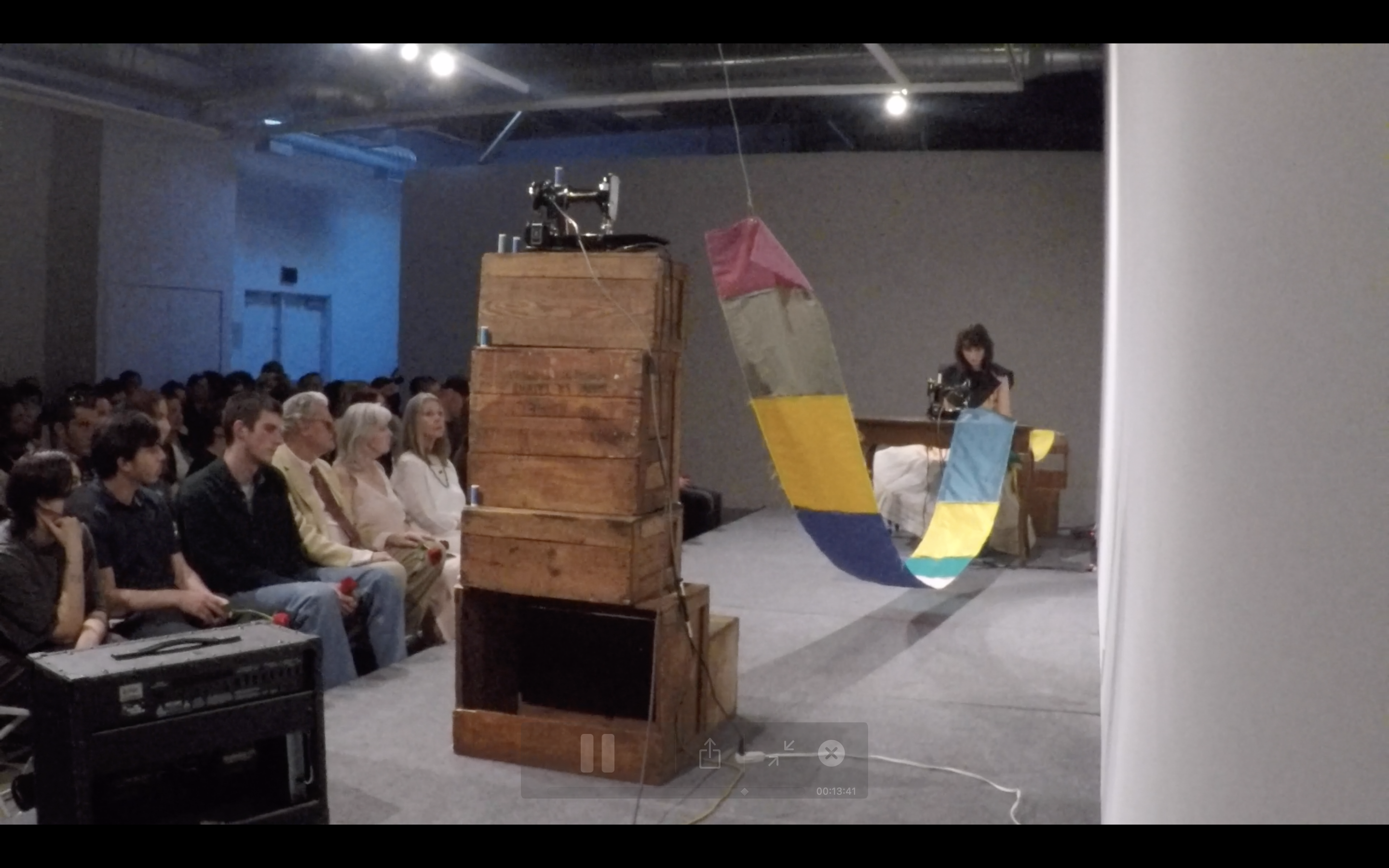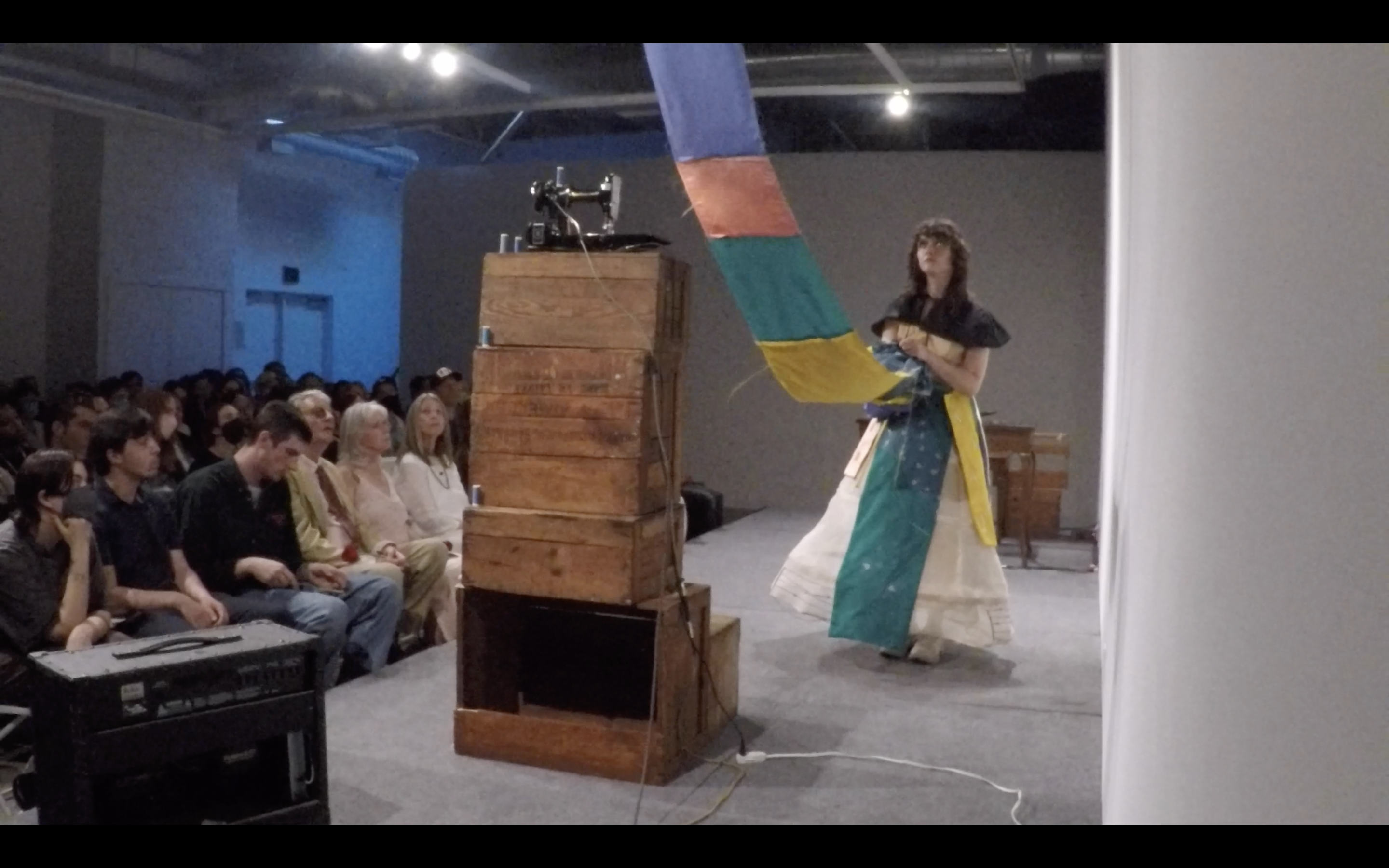May 14, 2022
Recital II My Brother by Nicole Cooke

About
Recital II My Brother is a transmission of love & longing between two singing sewing machines (one belonging to the artist and the other which was used by her late brother) that pierces the liminal veil of grief and reconnects two siblings outside of space and time.
In Ancient Greek mythology, three women known as the Moirai are responsible for assigning destiny to every mortal human. Clotho, whose name means “The Spinner,” spins the thread of life on her spindle beginning the day a baby is born. Lachesis, “The Alotter,” measures the thread spun by Clotho, thereby deciding the length of time a person is to live. Atropos, the eldest of the three sisters whose name means “She Who Cannot be Turned” chooses the moment of death by cutting the thread of life with her scissors. The Moirai have come to be known in English as the Fates.
In 2020 Nicole Cooke’s brother passed away unexpectedly at the age of 24. Since then, Cooke’s art practice, which combines elements of music, performance, and fashion, has evolved to help her reckon with profoundingly isolating grief. Recital II My Brother is a live performance inviting the audience to witness a transmission between two singing sewing machines that metaphorically represents the artist’s unbridled connection to her brother which exists in a place beyond time, space, and mortality. The antique sewing machines used in the performance both belong to Cooke: the one that she sews on is her personal machine while the other, perched on a stack of crates, was used by her brother up until his death. A single blue thread flows from the “brother machine”, feeding Cooke’s machine as she sews a patchwork silk scarf that is 24 feet in length-- one foot for each year of her brother’s life. The image of a lone strand of thread slowly plucked from an unfurling spindle is reminiscent not only of the Fates, but also of the work of Spanish Surrealist artist Remedios Varo which inspired many of the visual cues in Cooke’s performance.
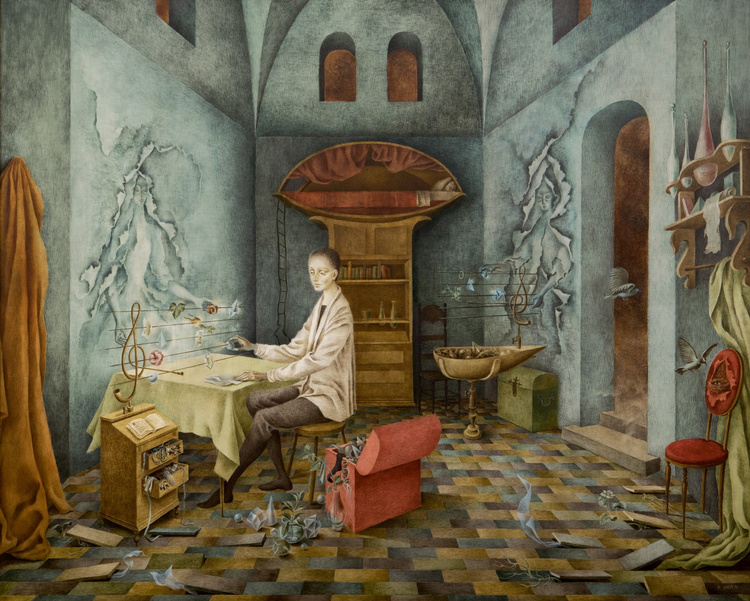 Remedios Varo, Armonia, 1956
Remedios Varo, Armonia, 1956
Remedios Varo is perhaps most well-known for her paintings of women sewing in grand settings imbued with celestial symbolism. In her 1956 painting Armonia, a figure seated at a sewing table operates a giant musical stave made of golden bars, while a goddess-like being emerges from the wall behind her to touch the apparatus. To Cooke, music is the most universal art form because of its ability to transcend time and viscerally connect people— two strangers upon hearing the same song may feel the same emotions though they have nothing else in common. In that sense music acts as a salve to grief which is a state of eternal, unrelenting solitude. In Recital II My Brother, contact microphones pick up on the minute sounds made by the sewing machines which are then fed through effect pedals and amplified. As Cooke sews according to an intricate notation of gestures she created as a “score,” nuances in the sounds -- her machine’s steady, vital rhythm like a heartbeat and the brother machine’s ethereal harmonic sounds-- are ultimately left up to chance. A space opens and the music arranges itself within it. A specific arrangement of sounds can never be exactly recreated, as it is inextricable from the moment the notes are stitched onto the scarf in blue thread that passes through the brother machine. The same fine silks that make up the scarf are used in the garments that Cooke made for herself to wear: a patchwork dress and coattails worn with an oversized crinoline. The stately clothing acts as a layer of protection, allowing her to enter into a highly vulnerable and intimate realm where, for a few moments, the intangible is within reach.
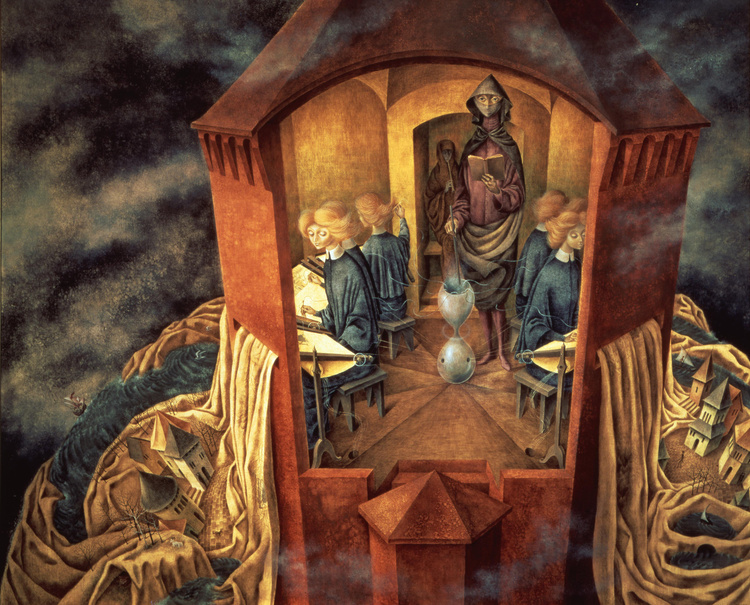 Remedios Varo, Bordando el manto terrestre (Embroidering the Earth's Mantle), 1961
Remedios Varo, Bordando el manto terrestre (Embroidering the Earth's Mantle), 1961
 Remedios Varo, Bordando el manto terrestre (Embroidering the Earth's Mantle), 1961
Remedios Varo, Bordando el manto terrestre (Embroidering the Earth's Mantle), 1961Bio
Nicole Cooke (b. Venice, CA) employs garment construction as her primary path toward larger performative works. Her laborious and hand-made clothing objects carry tactile and conceptual functionality within the performance projects she writes, directs and often acts in. In these works, garments are shape-shifters, swiveling between costume, fashion or functionality. Past projects include a series of public character studies, a desktop sampler built to house the voices of her clothing objects and a Singer sewing machine configured into a singing instrument. Her history as an artist, her time apprenticing at Atelier Caraco in Paris, and her studies at UCLA’s Design | Media Arts program have all sharpened her investment in the histories of couture craft and sewing, clothing’s relation to gender performativity, and visibilizing the historically invisible spaces of “women’s work” by shifting those legacies into public spheres. Her work can be found at series-archive.com.
Listen to her interview with Dressed Podcast entitled Sewing Machine Compositions here ︎︎︎
Listen to her interview with Dressed Podcast entitled Sewing Machine Compositions here ︎︎︎
Video Documentation
Photo Documentation
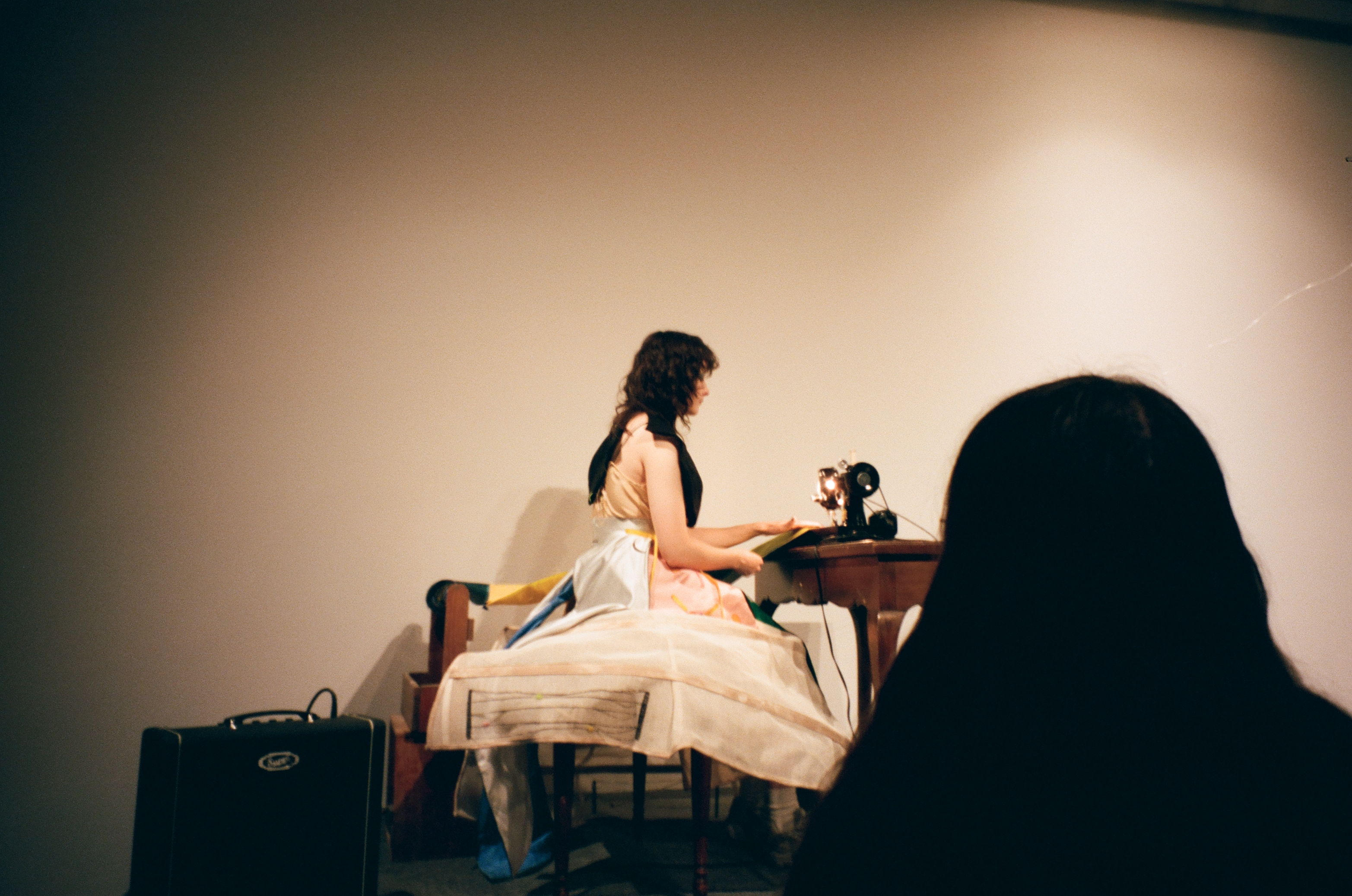
Photo: Danielle Hollander

Photo: Danielle Hollander
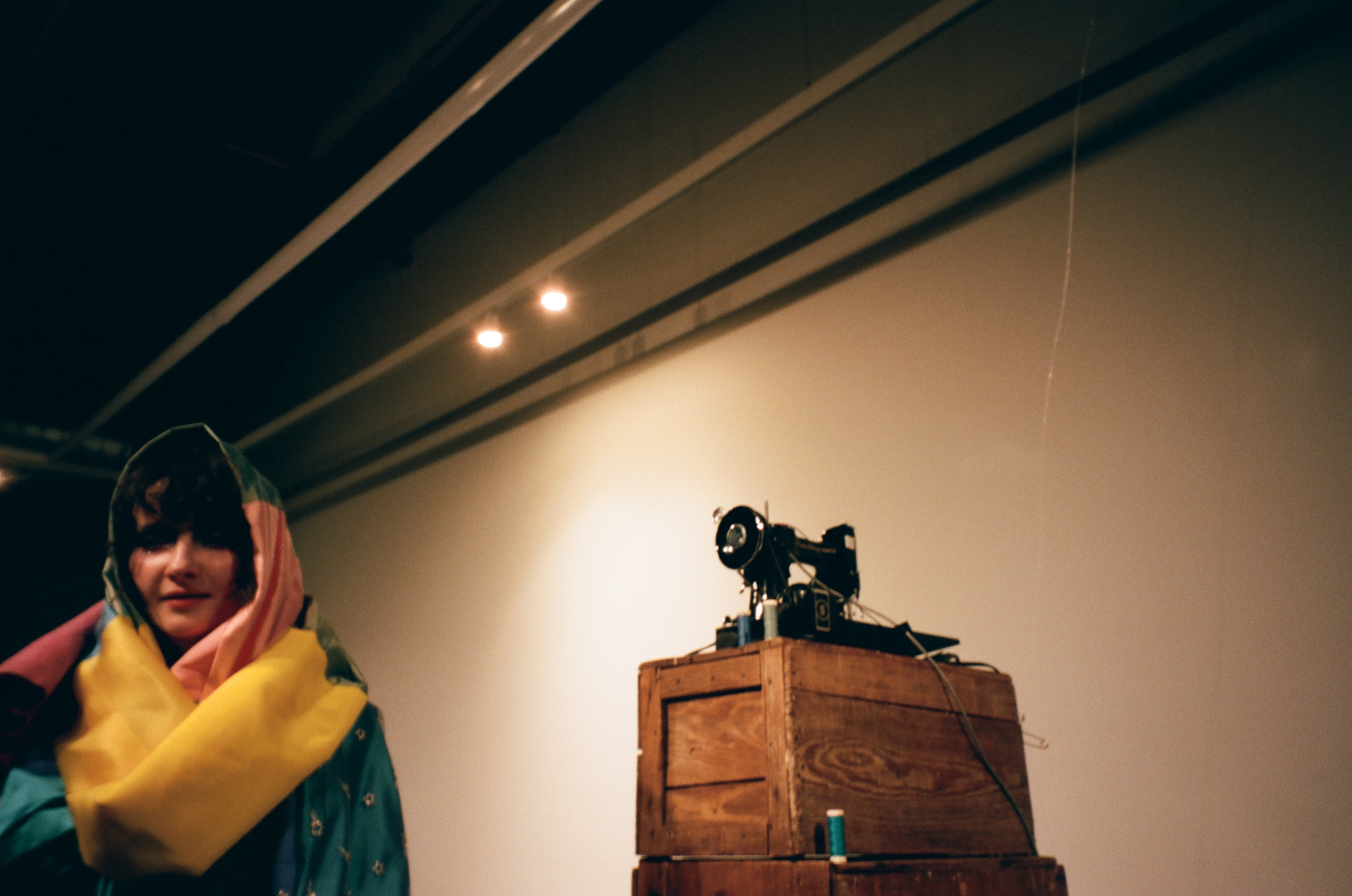
Photo: Danielle Hollander

Photo: Danielle Hollander

